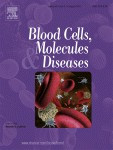Pospisilova D, Cmejlova J, Ludikova B, Stary J, Cerna Z, Hak J, Timr P, Petrtylova K, Blatny J, Vokurka S, Cmejla R. Blood Cells Mol Dis. 2012 Apr 15;48(4):209–18. Epub 2012 Mar 3. IF: 2.351

Department of Paediatric Haematology and Oncology
Abstract
Diamond-Blackfan anemia is a rare inherited bone marrow failure syndrome diagnosed in early infancy that is characterized by a (a) macrocytic anemia with no other significant cytopenia, (b) reticulocytopenia, and (c) normal bone marrow cellularity with a paucity of erythroid precursors. Physical anomalies are often present. Mutations in several ribosomal proteins have been associated with the disease. Here we present a detailed description of 39 patients from 34 families enrolled in the Czech National Diamond-Blackfan Anemia Registry. Erythrocyte adenosine deaminase activity and serum erythropoietin levels were measured and bone marrow analysis and clonogenic assays were carried out. Twenty-two different ribosomal proteins were sequenced. We identified mutations in five different ribosomal proteins in 28/39 patients (71.8%) from 23/34 families (67.6%). Several new mutations are described. The most interesting data relate to genotype-phenotype correlations. All patients with ribosomal protein L5 or ribosomal protein L11 mutations have a thumb defect usually with one or more other anomalies. Most of these patients were born small for gestational age and currently have short stature. We also described five patients with a ribosomal protein S26 mutation. All of the latter are transfusion-dependent and they exhibit skeletal abnormalities rather than thumb or craniofacial deformities. Patients with ribosomal protein S19 seem to bear mildest associated anomalies, usually in a craniofacial region.
-mk-